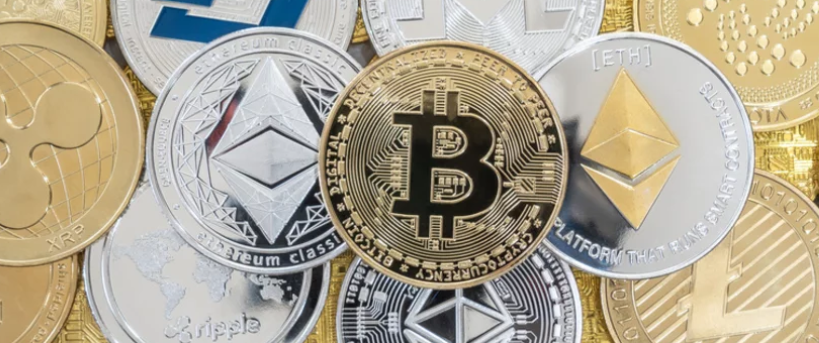1. Institutional Adoption Accelerates
The influx of institutional capital has already transformed cryptocurrency from a fringe investment into a mainstream asset class. By 2026, we can expect large financial institutions—such as banks, hedge funds, and asset managers—to deepen their participation through regulated exchanges, ETFs, and custodial services.
The approval of Bitcoin and Ethereum spot ETFs in several countries has legitimized crypto trading for traditional investors. Institutional-grade tools for portfolio management and risk mitigation will make crypto markets more stable and liquid, potentially attracting even more conservative investors.
2. Rise of AI-Driven Trading Algorithms
Artificial Intelligence (AI) is revolutionizing every industry, and crypto trading is no exception. In 2026, AI-powered bots and machine learning algorithms will dominate trading platforms, providing real-time analytics, automated decision-making, and predictive modeling based on massive datasets.
These intelligent systems will minimize human error, identify market anomalies, and execute trades at lightning speed—making trading more efficient and less emotional. Retail traders will gain access to simplified AI tools that were once exclusive to institutional players, leveling the playing field in unprecedented ways.
3. Regulation and Compliance Reshape Markets
Governments worldwide are tightening oversight of cryptocurrencies. In 2026, regulatory clarity will be a double-edged sword—it will discourage illegal activities but also ensure long-term stability and investor protection.
Countries that establish crypto-friendly frameworks—like Singapore, Switzerland, and the UAE—will continue to attract crypto startups and global exchanges. Meanwhile, compliance technologies (RegTech) will make it easier for companies to follow anti-money-laundering (AML) and know-your-customer (KYC) rules through blockchain-based verification systems.
4. Decentralized Finance (DeFi) 2.0 Expands
DeFi has already disrupted traditional banking, but the next generation—DeFi 2.0—will focus on sustainability, scalability, and security. Expect more hybrid systems combining decentralized protocols with regulated oversight, allowing institutional players to participate safely in decentralized markets.
Innovations such as liquid staking, cross-chain lending, and insurance protocols will attract more users while reducing systemic risks. By 2026, DeFi platforms will offer services rivaling conventional banks—without intermediaries and with faster transaction speeds.
5. Integration of Real-World Assets (RWA)
Tokenization of real-world assets will be one of the most significant crypto trends of 2026. From real estate and art to carbon credits and company shares, tokenized assets will allow investors to buy fractions of high-value items and trade them seamlessly on blockchain platforms.
This development will democratize investment opportunities and increase liquidity in previously illiquid markets. Moreover, it will bridge the gap between the physical and digital economies, reinforcing blockchain’s role as a foundation for global finance.
6. Sustainable and Green Cryptocurrencies
The environmental impact of mining has been a long-standing concern. In 2026, sustainability will be a defining theme, with more networks transitioning to energy-efficient consensus mechanisms like Proof of Stake (PoS) and Proof of Authority (PoA).
Projects that prioritize carbon neutrality, renewable energy, and transparent reporting will attract investors who are increasingly focused on Environmental, Social, and Governance (ESG) criteria. Expect to see a new wave of “green coins” that combine profitability with responsibility.
7. Evolution of Central Bank Digital Currencies (CBDCs)
CBDCs are poised to reshape how people use money. By 2026, several major economies—including China, the European Union, and India—will have fully deployed digital versions of their national currencies.
While CBDCs differ from decentralized cryptocurrencies, they will help legitimize digital assets globally. In parallel, they will pressure private crypto projects to innovate and improve scalability and compliance to remain competitive.
8. The Metaverse and Web3 Economy
The convergence of blockchain, virtual reality (VR), and digital ownership will continue driving the growth of the Metaverse and Web3. Crypto tokens, NFTs, and decentralized identity systems will power immersive economies where users own digital assets and trade them seamlessly across platforms.
By 2026, businesses will use blockchain to authenticate digital goods, enable peer-to-peer commerce, and create new value chains within virtual environments. Investors who understand these ecosystems early will gain significant advantages.
9. Advanced Security and Custody Solutions
As digital assets increase in value, security threats grow alongside them. The next generation of custody solutions will combine multi-party computation (MPC), biometric verification, and quantum-resistant encryption to safeguard funds.
In addition, decentralized identity (DID) frameworks will empower users to control their personal data while complying with international regulations. Secure, user-friendly wallets will be essential for mainstream adoption.
10. Education and Financial Literacy Go Mainstream
Crypto adoption will expand as financial literacy improves. By 2026, educational platforms, universities, and governments will collaborate to provide blockchain and crypto training at scale. Knowledge will be the new currency, helping investors make informed, data-driven decisions instead of relying on speculation.
Final Thoughts: Preparing for the Next Era of Crypto
The crypto landscape of 2026 will be defined by transparency, intelligence, and integration. From institutional participation and AI-driven strategies to tokenized assets and sustainable coins, the future of crypto trading will reward those who stay informed and adaptable.
To thrive in this rapidly changing market, investors should focus on diversification, regulatory awareness, and continuous learning. Crypto trading is no longer just about speculation—it’s about innovation, inclusion, and long-term value creation.
